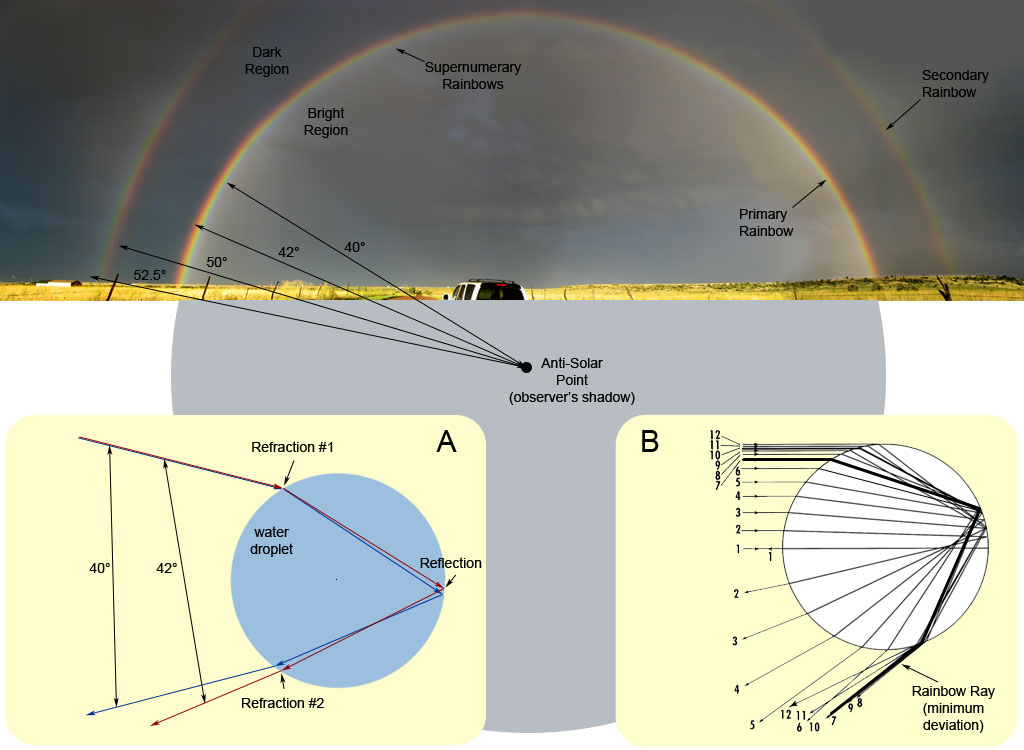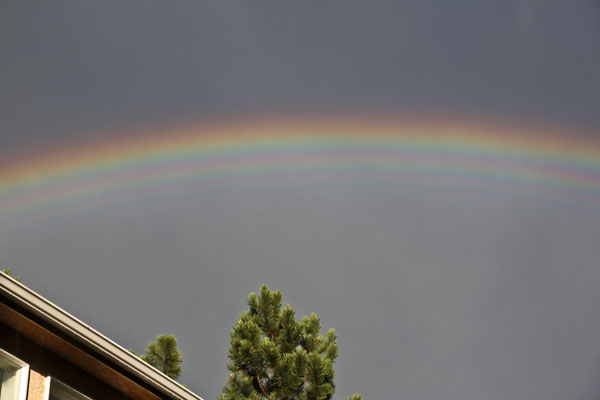Anatomy of a Rainbow

Rainbow is caused by a double refraction and one reflection of sunrays in water droplets (the path of light is depicted in the insert A above). The larger the water droplets the more pure are the colors. The primary rainbow forms a 41° arch, and the secondary rainbow (double refraction and reflection) forms a 52° arch. Inside the primary rainbow arch is brighter than outside because all light rays are reflected inside water droplet, and none outside, as depicted on the insert B above (redrawn from R. Greenler, Rainbows, Halos and Glories, Cambridge University Press, Cambridge, 1980.) Light is actually reflected in water droplets in many different angles, and that causes brighter white background, but interestingly, most light is reflected under a special angle, that produces the rainbow effect: see the "Rainbow Ray", ray number 7, in the insert B. Rainbow is made of a polarized light that allows for yet another phenomenon. Supernumerary rainbows are created due to light interference. A better photo, made with a polarized filter, of supernumerary bows is presented below.
© 2012 PikesPeakPhoto. All rights reserved.

